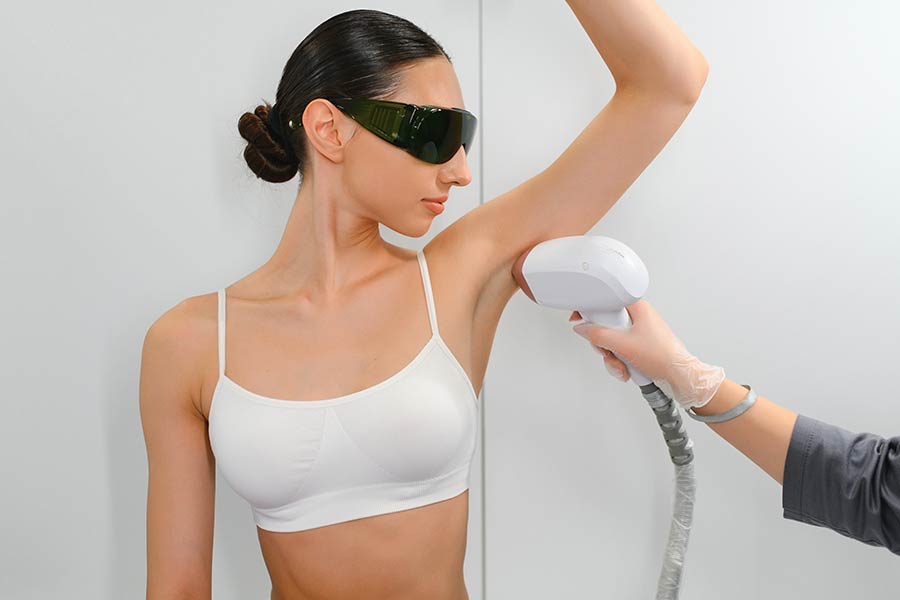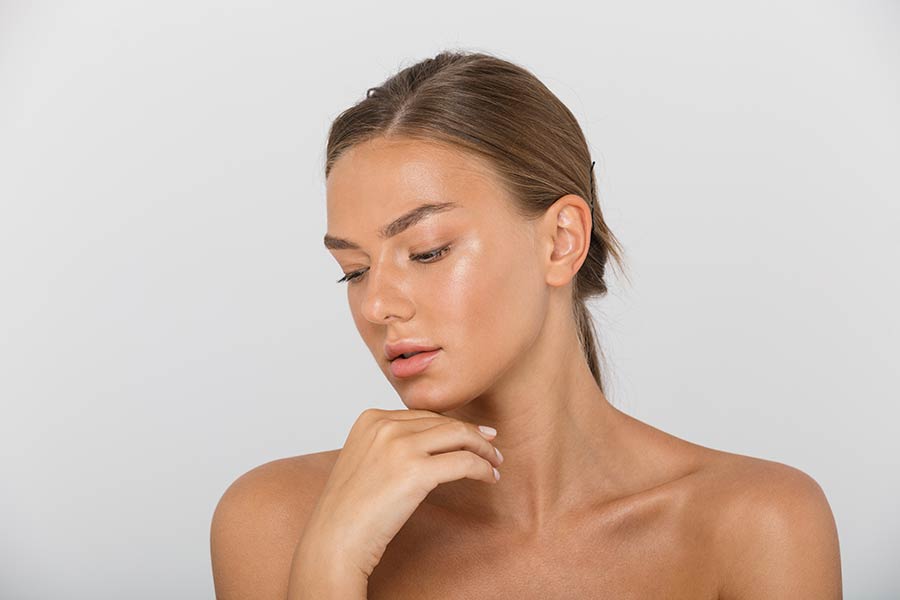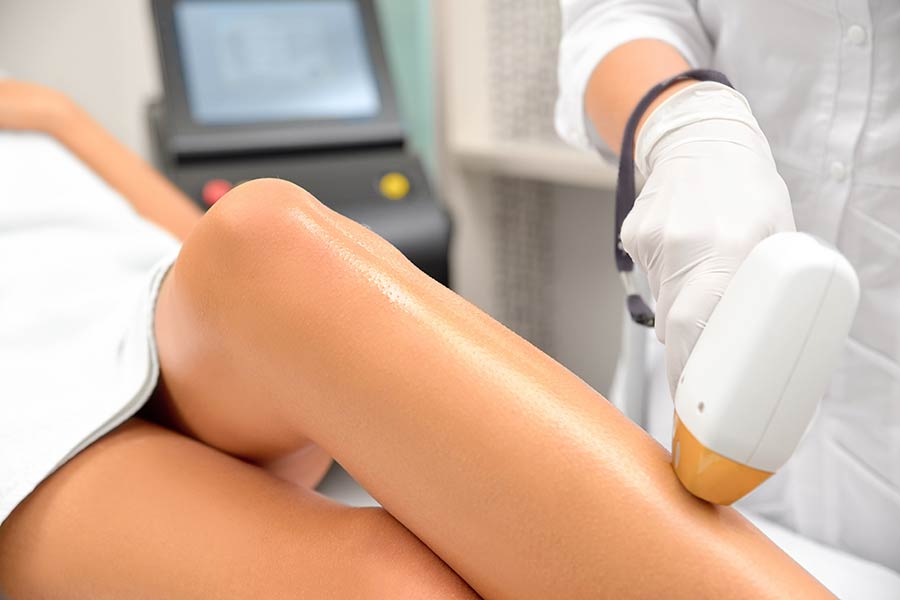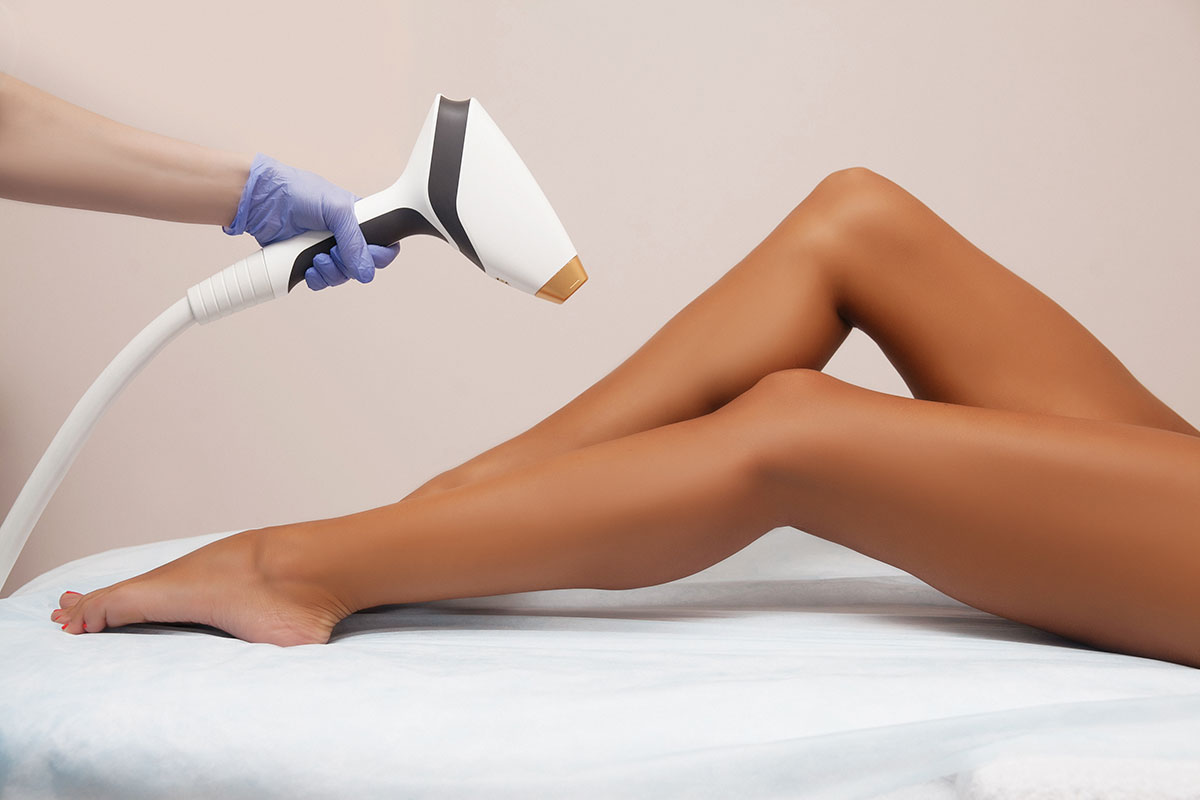Ever wondered why your skin feels a bit off after zapping away unwanted hair? Laser hair removal is a game-changer for many, but the journey doesn’t end when the laser switches off. The real magic happens with proper aftercare, ensuring your skin stays smooth, happy, and healthy. We're diving into the nitty-gritty of post-laser care, stripping away the myths to give you the lowdown on keeping that glow without the ouch. From cooling gels to sun avoidance, we'll guide you through a no-fuss routine that makes all the difference. So, if you've just stepped out of your session or planning one soon, stick around for some straight talk on laser hair removal aftercare.
Key Takeaways
- Laser hair removal is a popular method for achieving smooth skin, but knowing how to care for your skin afterward is key to the best results.
- After your treatment, cool down your skin and avoid hot showers to reduce irritation and redness.
- If you experience side effects like swelling or discomfort, gentle skincare products and over-the-counter pain relief can help manage these symptoms.
- Protect your treated skin from the sun by using a high SPF sunscreen and wearing protective clothing, as your skin will be more sensitive to UV rays.
- Avoid strenuous activities and anything that causes excessive sweating for 24-48 hours post-treatment to prevent irritation and ensure optimal healing.
- For long-term care, follow a simple yet effective skincare routine and consult with a professional if you notice any unusual reactions or if the treated area doesn't improve.
Understanding Laser Hair Removal
Treatment Basics
Laser hair removal uses light to target hair follicles. This stops hair growth. The laser's light is absorbed by the pigment in the hair, which damages the follicle enough to reduce hair growth but not harm the surrounding skin.
Different skin and hair types need different lasers. Darker hair absorbs more light, making it easier to treat. Lighter skin allows the laser to focus better on the hair follicle. People with darker skin or lighter hair might need a specific type of laser for effective treatment.
You'll likely need more than one session for best results. Hair grows in cycles, and the laser works best on hairs in their growth phase. Multiple treatments ensure that as many follicles as possible are targeted.
Aftercare Importance
Aftercare is crucial for healing and preventing irritation. Keep the treated area clean and dry. Apply a gentle moisturizer if your skin feels dry.
Reducing side effects is another key reason for proper aftercare. Some common side effects include redness, swelling, and discomfort. These usually go away within a few hours or days without intervention, but good aftercare can ease these symptoms faster.
Proper aftercare plays a big role in achieving optimal results. By following your provider's instructions, you help your skin heal correctly, which can make future sessions more effective and reduce the chance of complications.
Expected Results
Set realistic expectations about what laser hair removal can do. It typically results in significant hair reduction but doesn't always lead to complete permanent removal.
Full results take time to appear. You may start seeing changes after a few weeks, but it often takes several months and multiple sessions to see the final outcome.
Response to treatment varies by individual. Factors like hormone levels, age, and genetics all play a part in how well laser hair removal works for you. Some people may see quicker or more dramatic results than others.
Immediate Aftercare Steps
Cooling Techniques
After understanding how laser hair removal works, it's crucial to know how to care for your skin right after. Cooling the treated area is a top priority. You can do this by applying cool packs. They help soothe the skin gently.
Another great option is using aloe vera gel. Its natural cooling effect can calm the skin beautifully. Remember, never put ice directly on your skin. It could cause more harm than good.
Skin Cleansing
Next up is keeping the area clean without causing irritation. Opt for gentle, fragrance-free cleansers. They're kind to your skin and won't provoke any unwanted reactions.
It's important not to scrub or exfoliate right after treatment. Your skin is sensitive now. Instead, pat your skin dry carefully with a soft towel. Rubbing can irritate the freshly treated areas.
Moisturizing Essentials
Keeping your skin moisturized is essential, but choose wisely. Go for hypoallergenic and non-comedogenic moisturizers. These types won't clog pores or trigger allergies.
Make sure to apply moisturizer regularly. This keeps your skin hydrated and helps with healing. However, avoid products that contain alcohol or perfumes as they can dry out and irritate the skin further.
Managing Side Effects
Redness Reduction
After following the immediate aftercare steps, you might still notice some redness. Don't worry. This is common. Applying over-the-counter hydrocortisone cream can help if your skin care professional agrees it's safe for you. It eases the irritation.
Keeping the treated area cool also helps reduce redness. Use a cool cloth gently on the skin. Remember, harsh rubbing can irritate it more.
Staying hydrated plays a big role in your skin's health. Drink plenty of water to support your skin's recovery process.
Swelling Control
etimes, after laser hair removal, parts of your body may swell a bit. This is normal too. If it happens to limbs like arms or legs, try keeping them elevated. It helps reduce swelling faster.
Applying cool compresses intermittently can provide relief and control swelling effectively. Make sure not to apply ice directly on your skin as this can cause damage.
If swelling doesn't go down after a few days, it’s wise to consult with a professional. They can check if everything is okay or if you need extra care.
Treating Blisters
In rare cases, small blisters might form on the treated area. Cover these carefully with a sterile bandage to protect them. This keeps them clean and aids in healing.
It's very important not to pop blisters because that increases the risk of infection significantly. Let them heal on their own time.
For large or particularly painful blisters, getting medical advice is crucial. A healthcare provider can give you the right treatment and prevent further issues.
Skin Care Post-Treatment
Gentle Products
After managing side effects, caring for your skin is crucial. Start by choosing skincare and makeup products designed for sensitive skin. This helps avoid further irritation.
Look for labels that say "for sensitive skin" or "hypoallergenic." These products are less likely to cause problems. Avoid retinoids and chemical exfoliants for a while. They can make your skin more sensitive after laser hair removal. Read product labels carefully. Make sure they don't have irritating ingredients.
Hydration Tips
Hydrated skin heals better. Drink plenty of water every day to help your skin recover. It's a simple yet effective way to support skin healing.
Consider using a humidifier, especially in dry environments. It adds moisture to the air, which helps your skin stay hydrated. Try to limit drinks like alcohol and caffeine. They can dehydrate your body and slow down the healing process.
Avoiding Irritants
To protect your treated skin, avoid certain places and products for a while. Stay away from chlorinated pools and saunas. Chlorine and extreme heat can irritate your skin even more.
Choose laundry detergents that are fragrance-free. Fragrances in detergents can also irritate your sensitive post-treatment skin. Lastly, be careful with skincare products you use during this time. Avoid those containing glycolic acid or other harsh ingredients.
Sun Exposure Guidelines
SPF Recommendations
After laser hair removal, protecting your skin from the sun is crucial. Apply a broad-spectrum SPF 30+ sunscreen daily, even on cloudy days. This type of sunscreen shields your skin from UVA and UVB rays, both harmful after treatment.
Reapply your sunscreen every 2 hours when spending time outdoors. This ensures continuous protection, especially important if you're sweating or swimming.
For those with sensitive post-treatment skin, physical sunscreens are a better choice. They contain zinc oxide or titanium dioxide, which sit on top of the skin to reflect sunlight away. These ingredients are less likely to irritate your skin compared to chemical sunscreens.
Sun Avoidance Periods
It's best to stay out of direct sunlight for at least a week after your laser hair removal session. The treated area is more vulnerable to the damaging effects of the sun during this period.
Plan indoor activities during peak sun hours, usually between 10 am and 4 pm when the sun is strongest. If you must be outside during these times, seek shade whenever possible.
Use umbrellas or hats for necessary outdoor time. They provide extra protection for your treated areas, helping prevent unwanted side effects like hyperpigmentation.
Protective Clothing
Wear loose, breathable fabrics to cover treated areas when going outside. Tight clothing can irritate the sensitive skin post-treatment.
Opt for long sleeves and pants for added sun protection. Covering up reduces your risk of sunburn and ensures a smoother recovery process.
Choose light colors to reflect sunlight away from your body. Darker colors absorb more heat and can make you feel hotter, potentially causing discomfort on treated areas.
Activity Restrictions
Exercise Limitations
After laser hair removal, your skin needs time to heal. Avoid strenuous exercise for 24 to 48 hours. This is because heavy sweating can irritate the treated area.
Instead, opt for light activities like walking. These are safe and won't harm your skin. Remember, it's important to listen to your body. If you feel any discomfort, take a rest. Your body will thank you for it.
Hot Shower Avoidance
Hot showers can be harmful after laser treatment. Choose lukewarm water instead. It's gentler on your skin.
Avoid steam rooms and hot baths as well. They can increase irritation in the treated areas. Also, try to limit your shower time. Long showers can dry out your skin even more.
Tight Clothing Risks
Wearing tight clothes is not a good idea after laser hair removal. They can rub against the treated area and cause irritation.
Choose loose-fitting garments instead. They allow air to circulate around your skin, which helps in healing. Be mindful of the fabric materials too. Some may cause friction and worsen the irritation.
Long-Term Care Strategies
Routine Maintenance
After adhering to activity restrictions, it's crucial to shift focus to routine maintenance for your skin. This involves a gentle skincare regimen that soothes and protects the treated areas. Use products that are mild and free from harsh chemicals.
Scheduling follow-up treatments as recommended by your specialist is key. These sessions ensure the laser hair removal process is thorough and effective over time.
It's important to monitor how your skin reacts after each treatment. Adjust your care routine based on any redness, irritation, or other responses. This personalized approach helps maintain skin health and optimizes results.
Touch-Up Sessions
Even after initial treatments, plan for periodic touch-ups. These sessions are vital for maintaining smooth, hair-free skin in the long run. Certain areas may show quicker hair regrowth and will need more frequent attention.
Touch-up appointments also offer a chance to check on your skin’s condition with a professional. They can spot issues early and adjust treatment plans accordingly.
Understand that some parts of the body react differently to laser hair removal. Be prepared for these variations and use touch-ups as an opportunity for reassessment.
Observing Changes
Regular self-examination of treated areas is essential. Look out for changes in skin texture or color. Such vigilance helps catch potential side effects early.
Documenting your progress is useful when discussing ongoing care with your provider. Photos can be particularly helpful in tracking changes over time.
Patience is crucial, as some results take weeks or months to fully manifest. Trust the process and keep a close eye on how things evolve, adjusting care routines as necessary.
When to Seek Professional Help
Unusual Symptoms
etimes, after laser hair removal, your skin may react in ways you didn't expect. Unexpected pain should not be taken lightly. If you feel more than the usual tenderness, it's a sign to get help. Severe redness and blistering are also not normal. They could mean your skin is having a strong reaction.
Itching or hives can pop up too. These might show you're allergic to something used during the procedure. For any of these symptoms, reaching out for professional advice is key. Don't wait too long to do this.
Infection Signs
Infections are rare but possible after laser hair removal. You'll want to keep an eye out for them. Signs include increased pain, pus coming from the treated area, or even a fever. These symptoms are serious warnings.
To avoid infection, always keep the treated spots clean and dry. This was touched on in "Long-Term Care Strategies," but it's worth repeating here because of its importance. If you suspect an infection, contacting a healthcare provider immediately is crucial. They can guide you on what steps to take next.
Persistent Discomfort
After laser treatment, some discomfort is normal. But it shouldn't last too long. Use pain relief methods recommended by your specialist. This might include certain creams or cooling treatments.
Avoid taking over-the-counter pain medication without getting advice first. Some medications can make the situation worse instead of better. If your discomfort doesn’t go away after a few days, that’s a red flag. It means you should seek medical attention.
Maximizing Treatment Results
Compliance Importance
Adhering to aftercare instructions is crucial for optimal healing and results. Each step in the care plan plays a vital role in the recovery process. Skipping any part may not only delay healing but could also negatively impact the outcome of your laser hair removal treatment. It's essential to follow the guidance provided by professionals to ensure the best possible results.
Regular follow-up appointments are an opportunity to discuss any concerns or questions about the aftercare process. These sessions allow healthcare providers to monitor progress and make necessary adjustments to the care regimen, ensuring that patients stay on track towards achieving their desired outcomes.
Lifestyle Adjustments
After undergoing laser hair removal, incorporating sun protection into your daily routine becomes more important than ever. The treated areas become sensitive to sunlight, increasing the risk of skin damage if exposed without adequate protection. Using a high SPF sunscreen can help safeguard your skin and maintain the integrity of the treatment results.
Adjusting your skincare products is also essential post-treatment. Some products may be too harsh for newly treated skin, leading to irritation or adverse reactions. Opt for gentle, non-abrasive options that cater to sensitivity while promoting healing.
Modifying certain activities can further enhance recovery and prevent complications. Activities causing sweat and friction can irritate treated areas. It's wise to avoid strenuous exercise, tight clothing, and hot environments for a few days post-treatment or as advised by your healthcare provider.
Patient Testimonials
Hearing from those who have already gone through laser hair removal provides valuable insights into what can be expected during and after treatment. Patient testimonials shed light on both the physical and emotional aspects of the procedure, helping set realistic expectations for prospective patients.
Many share their personal journeys, discussing how they navigated challenges such as skin sensitivity or lifestyle adjustments during recovery. Personal tips from these experiences can be incredibly helpful for others preparing for their treatments, offering practical advice on managing discomfort or optimizing healing.
Testimonials often highlight the importance of following aftercare instructions closely and making necessary lifestyle changes to protect treated areas. By sharing these stories, individuals contribute to a broader understanding of what effective aftercare looks like and how it contributes to successful treatment outcomes.
Summary
You've journeyed through the ins and outs of laser hair removal aftercare, from the immediate steps right after your treatment to long-term care strategies. It's clear that taking care of your skin post-laser isn't just about following a list; it's about understanding your body's needs and responding accordingly. Whether it's managing side effects, protecting your skin from the sun, or knowing when to call in the pros, you're now equipped with the know-how to keep your skin happy and healthy.
Now, don't let this knowledge sit idle. Put it into action! Start integrating these aftercare tips into your routine and watch as your skin thanks you in its own way—by looking absolutely fabulous. And hey, if you ever find yourself unsure or in need of a little guidance, remember, professionals are just a call away. Ready to embrace smooth, cared-for skin? Let's get to it!
Frequently Asked Questions
What should I do immediately after laser hair removal?
Right after your session, cool the area with ice packs or a cold gel. This helps soothe any discomfort and reduces swelling. Think of it like giving your skin a mini spa day to calm down after its laser workout.
Can I shower after laser hair removal?
Yes, but wait for at least 24 hours before you hit the shower. When you do, keep it lukewarm—hot water is your skin's frenemy right now. It's like choosing a gentle yoga session over a high-intensity workout for your skin.
What are common side effects of laser hair removal?
A bit of redness and swelling is normal—it's your skin saying, "Hey, something just happened here!" These usually chill out within a few hours to days. If your skin could talk, it would probably ask for a little patience during this time.
How should I care for my skin after treatment?
Moisturize and baby your skin with fragrance-free products. Your skin's barrier got a bit of a challenge, so think of moisturizing as helping it rebuild its strength. It's like giving it the nutrients it needs after running a marathon.
Are there any restrictions on sun exposure after laser treatment?
Absolutely! Treat your treated area like a vampire treats sunlight - avoid it. If you must go out, SPF 30 or higher is your new best friend. It's like putting up an umbrella to protect yourself from rain; in this case, the rain is UV rays.
What activities should I avoid post-laser hair removal?
Skip the gym, sauna, or anything that gets you sweaty for the first 48 hours. Sweat can irritate the treated area. Imagine throwing a party when your house isn't clean; better to get everything in order first.
When should I seek professional help post-treatment?
If you notice signs of infection like increased pain, pus, or severe redness that feels more superhero origin story than post-treatment symptom, call your doctor. It’s better to be safe and let a pro check things out than hope for superpowers to kick in.












